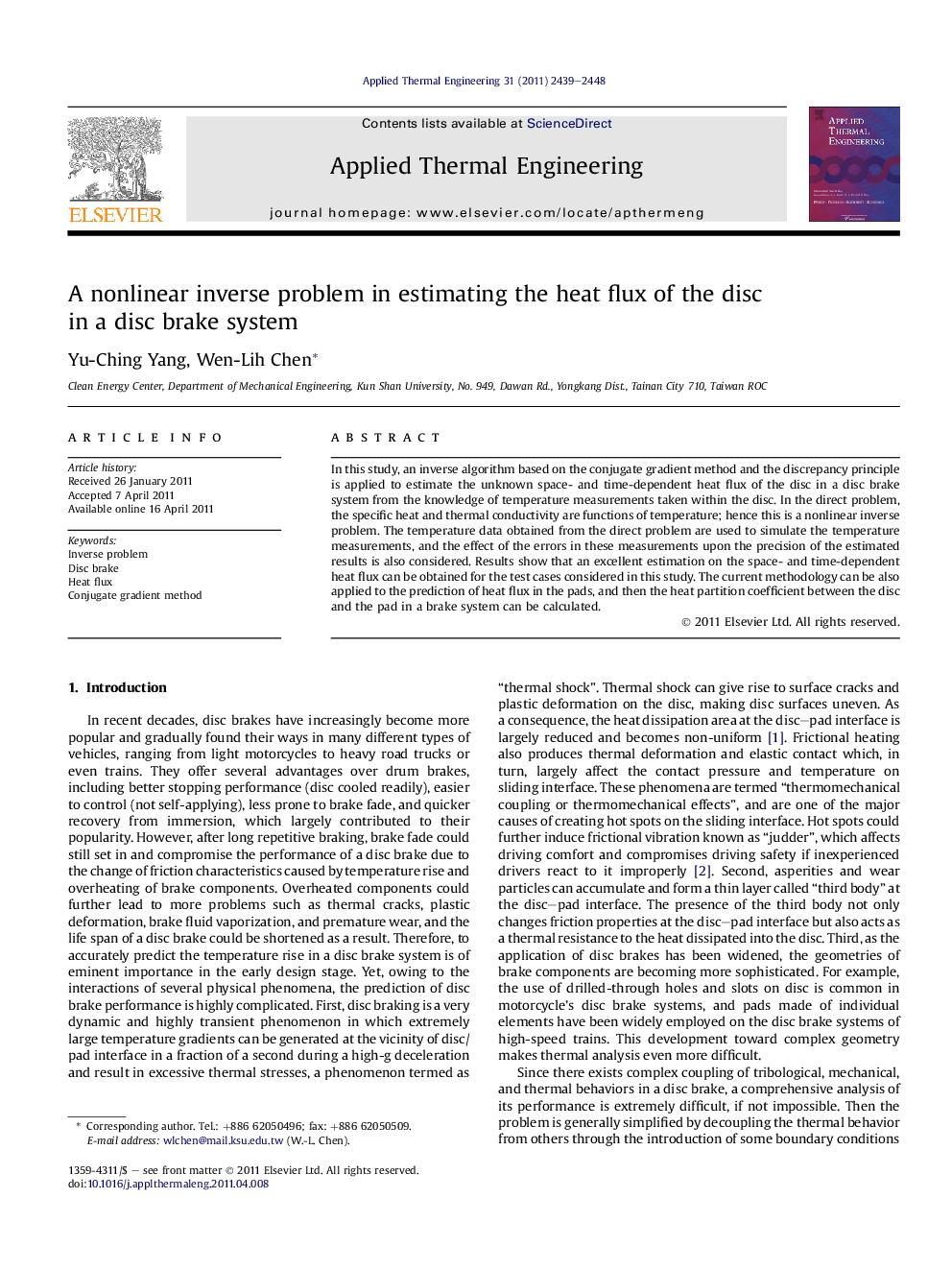| Article ID | Journal | Published Year | Pages | File Type |
|---|---|---|---|---|
| 647734 | Applied Thermal Engineering | 2011 | 10 Pages |
In this study, an inverse algorithm based on the conjugate gradient method and the discrepancy principle is applied to estimate the unknown space- and time-dependent heat flux of the disc in a disc brake system from the knowledge of temperature measurements taken within the disc. In the direct problem, the specific heat and thermal conductivity are functions of temperature; hence this is a nonlinear inverse problem. The temperature data obtained from the direct problem are used to simulate the temperature measurements, and the effect of the errors in these measurements upon the precision of the estimated results is also considered. Results show that an excellent estimation on the space- and time-dependent heat flux can be obtained for the test cases considered in this study. The current methodology can be also applied to the prediction of heat flux in the pads, and then the heat partition coefficient between the disc and the pad in a brake system can be calculated.
► We use conjugate gradient inverse method to determine the unknown space- and time-dependent heat flux into the disc during a braking process. ► Temperature-dependent specific heat and thermal conductivity of the disc are used. ► The temperature measurement location should be put as close to the friction interface as possible. ► Results show that the space- and time-dependent heat flux can be estimated accurately even involving measurement errors.
